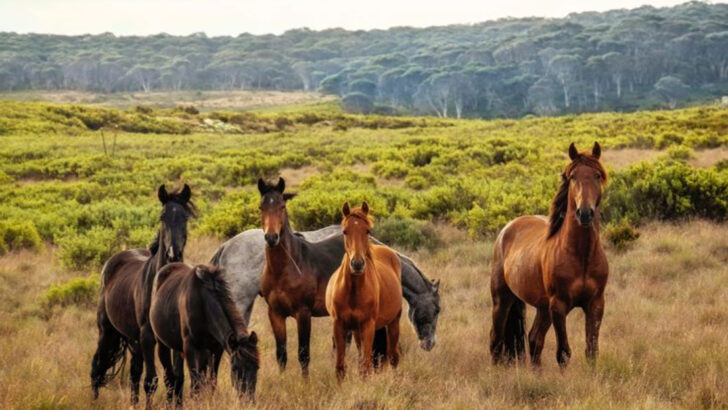Wild horses are living legends, galloping through history with untamed grace. These magnificent creatures aren’t just part of our past; they’re an embodiment of freedom and strength, roaming the wild with a spirit that can’t be broken.
From the rugged landscapes of Mongolia to the sun-kissed plains of the American West, wild horse breeds carry with them tales of survival, resilience, and the untamed beauty of nature. Each breed brings its own unique power and charm, making them as diverse as the places they call home.
Get ready to meet 18 incredible wild horse breeds that have shaped cultures, captivated hearts, and run wild across the globe. From the wild mustangs of the United States to the rare Przewalski’s horse in the wild steppes of Central Asia, these horses are a force to be reckoned with.
Grab hold of your reins—this adventure will leave you in awe of the raw power and beauty of the wild.
Mustang
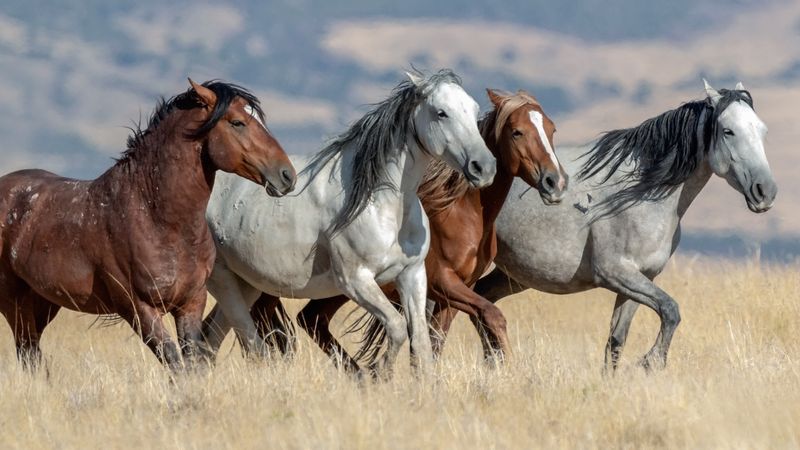
The Mustang, symbolizing the untamed spirit of the American West, roams the vast plains with an indomitable presence. Known for their resilience and adaptability, these horses thrive in various terrains, from deserts to lush valleys.
Their lineage dates back to the horses brought by Spanish explorers in the 16th century. Today, Mustangs are celebrated for their endurance and are often adopted and trained for various equestrian disciplines.
Whether seen galloping freely or working alongside humans, Mustangs embody a spirited legacy that continues to inspire awe.
Przewalski’s Horse
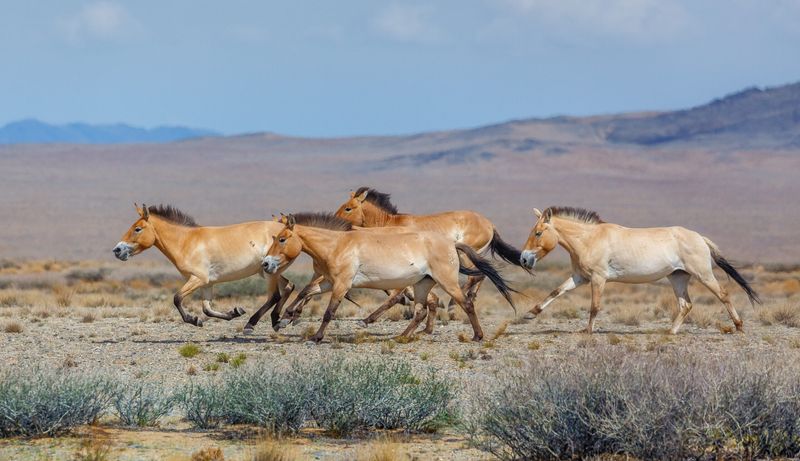
Przewalski’s Horse, native to the Mongolian steppe, stands out with its unique appearance and historical significance. Once nearly extinct, conservation efforts have brought this ancient breed back from the brink.
Recognizable by its dun color, erect mane, and stocky build, it is considered the last wild horse in existence. These horses display a remarkable ability to survive harsh climates, showcasing their robust nature.
Przewalski’s Horses are not just a symbol of resilience but a living link to our prehistoric past, fostering fascination among scientists and horse lovers alike.
Brumby
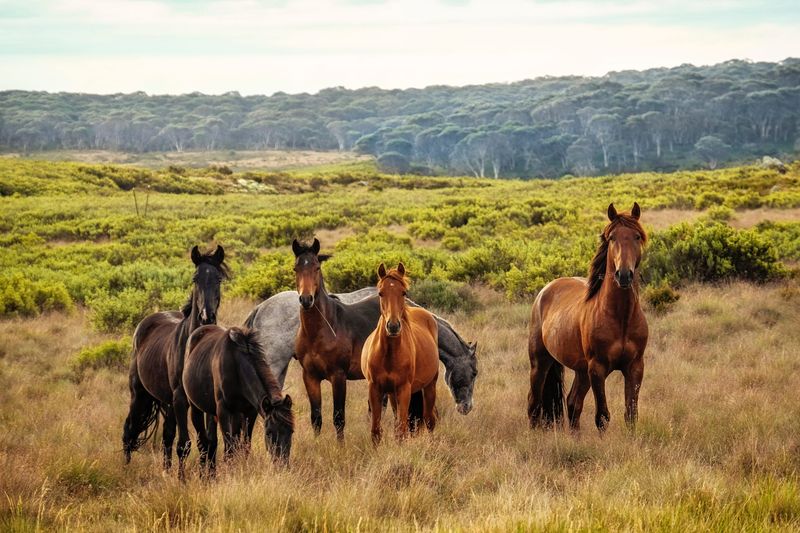
Australia’s Brumbies, embodying the spirit of freedom, roam the rugged outback with a sense of grace and wildness. These horses descended from escaped or abandoned horses of European settlers, adapting to the harsh Australian environment.
Brumbies are often subjects of debate due to their impact on ecosystems, yet they remain an integral part of Australian culture and folklore.
Their presence in the vast landscapes evokes imagery of adventure and untamed beauty. Brumbies, with their varied colors and sturdy build, are a testament to nature’s resilience and adaptability.
Camargue Horse
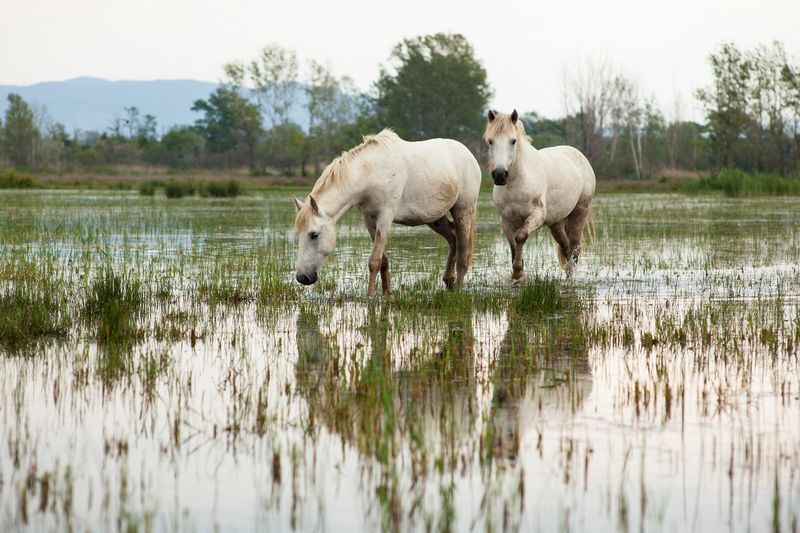
The Camargue Horse, known for its striking white coat, inhabits the marshy regions of Southern France. These horses, often seen wading through water, are adept at navigating the unique landscapes of their homeland.
Their origins trace back to ancient times, and they have been an essential part of the Camargue culture, often associated with cattle herding.
Renowned for their gentle temperament and agility, Camargue Horses are not only a visual delight but also a vital component of the region’s identity, making them a cherished breed worldwide.
Konik Horse
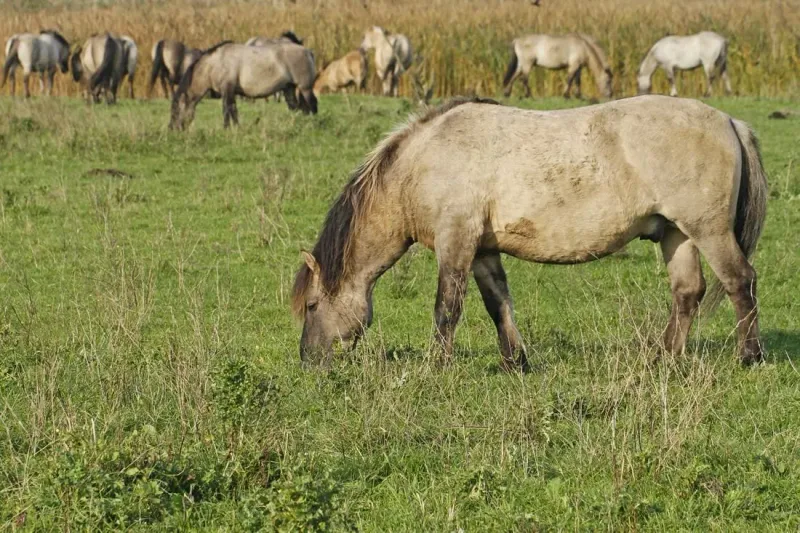
The Konik Horse, closely resembling the ancient Tarpan, roams the wetlands of Europe, embodying a piece of equine history. These horses are celebrated for their primitive features, including a robust build and mouse-gray coat.
Koniks play a crucial role in maintaining biodiversity in their habitats, often used in rewilding projects. Their calm demeanor and adaptability to various environments have made them a favorite among conservationists.
As guardians of the past, Konik Horses carry an ancient legacy, bridging the gap between wild and domesticated breeds, promoting harmony within nature.
Namib Desert Horse
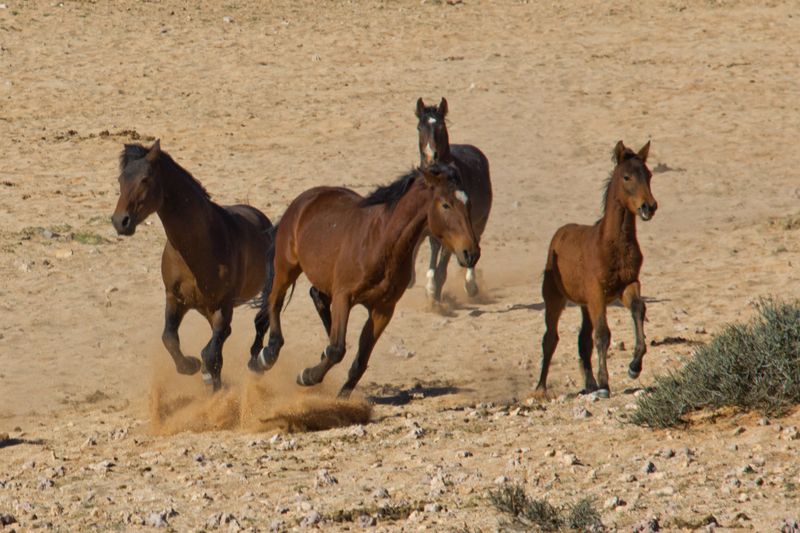
Amidst the arid landscapes of Namibia, the Namib Desert Horse stands as a testament to survival against all odds. This rare breed, believed to descend from German cavalry horses, thrives in one of the harshest environments on Earth.
Their elegant yet hardy appearance, coupled with a mysterious origin, adds to their allure. These horses have adapted to scarce water sources and extreme temperatures, showcasing remarkable resilience.
The Namib Desert Horse captivates those who witness its grace, a living emblem of nature’s tenacity and the timeless beauty of the African wilderness.
Dulmen Pony
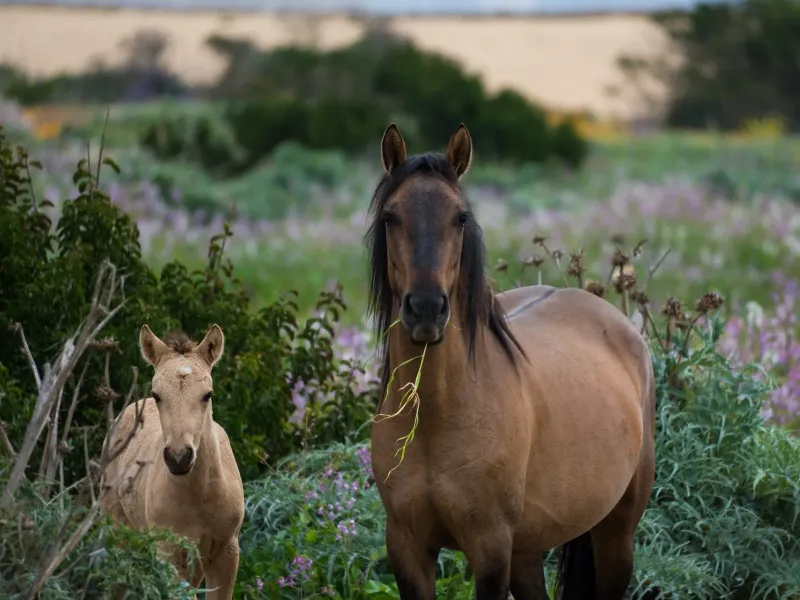
The Dulmen Pony, Germany’s only indigenous wild horse, grazes peacefully in the scenic meadows of North Rhine-Westphalia. These ponies are admired for their compact size, alert eyes, and sociable nature.
Every year, an event called the ‘Wild Horse Catch’ celebrates their presence, attracting numerous visitors. Dulmen Ponies are known for their friendly demeanor and adaptability, making them suitable for various equestrian activities.
They play a significant role in Germany’s ecological balance, maintaining the natural landscape and offering a glimpse into the country’s rich equine heritage.
Feral Horse of Sable Island

On the remote Sable Island, off the coast of Nova Scotia, feral horses thrive amidst grassy dunes and harsh weather conditions. These horses, isolated for centuries, have developed into a distinct population, displaying unique adaptations.
With their long, flowing manes and sturdy frames, they withstand strong ocean winds and limited resources. Sable Island horses are protected by law, ensuring their continued existence in this fragile ecosystem.
Their presence adds to the island’s mystique, enchanting visitors and researchers alike with their untamed beauty and resilience against nature’s challenges.
Pottok
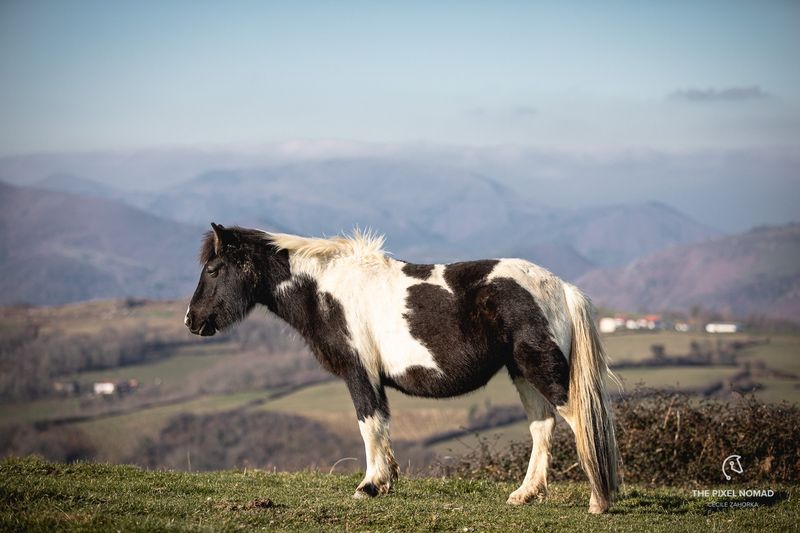
The Pottok, a native of the Basque Country, is a small, hardy horse known for its agility and surefootedness. These horses have roamed the Pyrenees for centuries, adapting to the mountainous and forested regions.
Pottoks are recognized by their varied coat colors and compact size, traits that have enabled them to survive in challenging terrains. They are an integral part of Basque culture and folklore, often participating in local festivals.
Their enduring presence in the mountains speaks of a deep connection with their environment, symbolizing the spirit of the rugged landscape they call home.
Hucul Horse
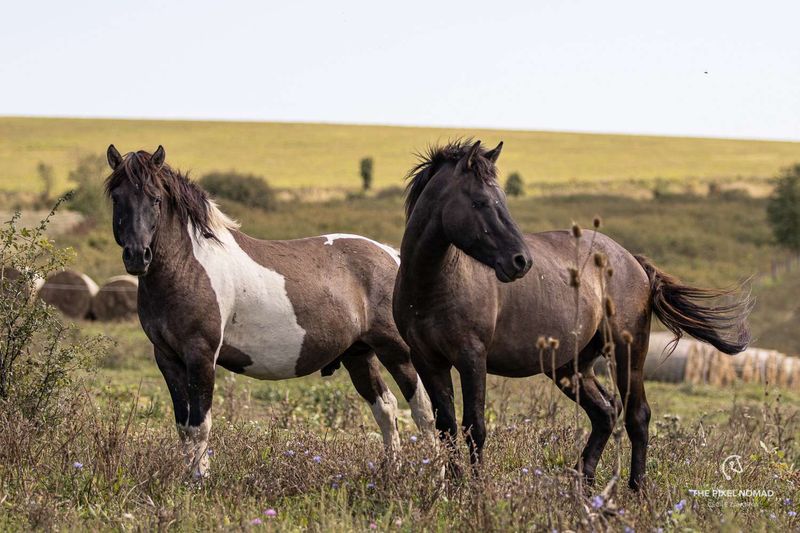
Originating from the Carpathian Mountains, the Hucul Horse is a remarkable breed known for its endurance and surefootedness. These horses are perfectly adapted to the rugged terrain, with strong limbs and a thick coat.
Huculs have played a vital role in local communities, used for transportation and agriculture due to their strength and resilience. Their calm demeanor and intelligence make them excellent companions for equestrian enthusiasts.
The Hucul Horse, often seen navigating steep hillsides, embodies a harmonious blend of strength and grace, reflecting the natural beauty of their mountainous homeland.
Sorraia Horse

The Sorraia Horse, native to the Iberian Peninsula, is a breed steeped in history and mystery. Known for its distinctive grulla color and primitive markings, the Sorraia is believed to descend from ancient horses that roamed the region.
These horses are admired for their agility and intelligence, traits that have allowed them to survive in the wild. Sorraias are an important cultural symbol, often linked to the traditional lifestyle of Iberian herdsmen.
With a presence as captivating as its heritage, the Sorraia Horse continues to intrigue horse lovers and historians alike, representing a living piece of equine history.
Yakutian Horse
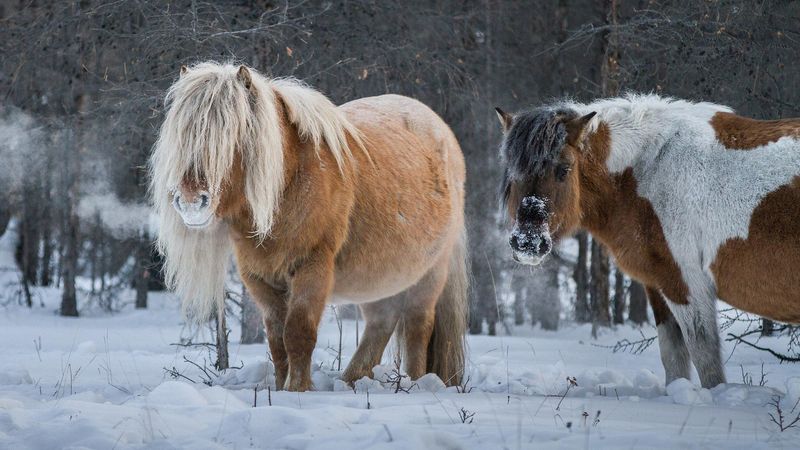
The Yakutian Horse, native to the Siberian wilderness, is a marvel of nature’s adaptability. This breed is renowned for its ability to endure the extreme cold, equipped with a dense winter coat and strong physique.
Yakutian Horses are vital to the local communities, providing transportation and resources in a challenging environment. Their calm and gentle nature, combined with remarkable stamina, makes them indispensable to the people who rely on them.
The enduring bond between the Yakutian Horse and its human companions highlights a mutual respect and reliance, illustrating the harmony between nature and mankind.
Takhi
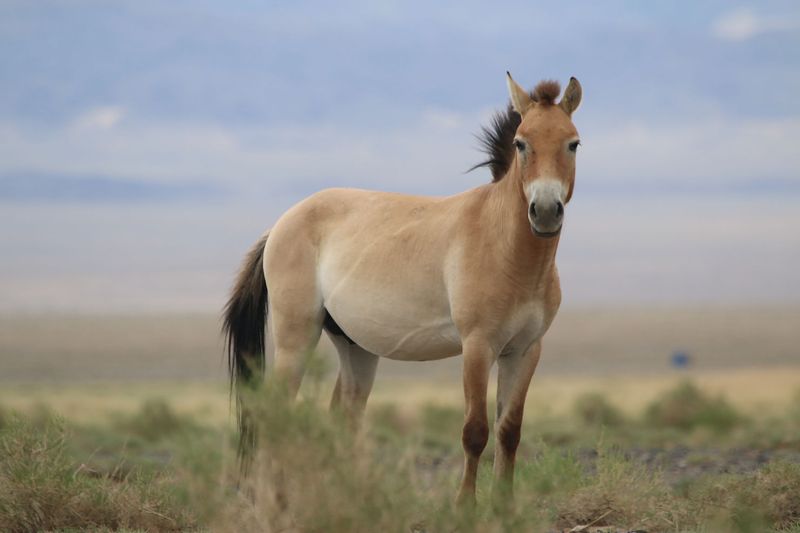
The Takhi, also known as the Wild Mongolian Horse, is a living relic of the past, roaming the vast Mongolian steppes. Known for their sandy coats and upright manes, Takhis are truly unique in the equine world.
Once near extinction, these horses have made a remarkable comeback through extensive conservation efforts. Their primitive features and untamed nature fascinate scientists and horse enthusiasts alike.
As a national symbol of Mongolia, the Takhi embodies the spirit of freedom and resilience, a testament to the enduring wonders of nature and the power of collective conservation efforts.
Kaimanawa Horse
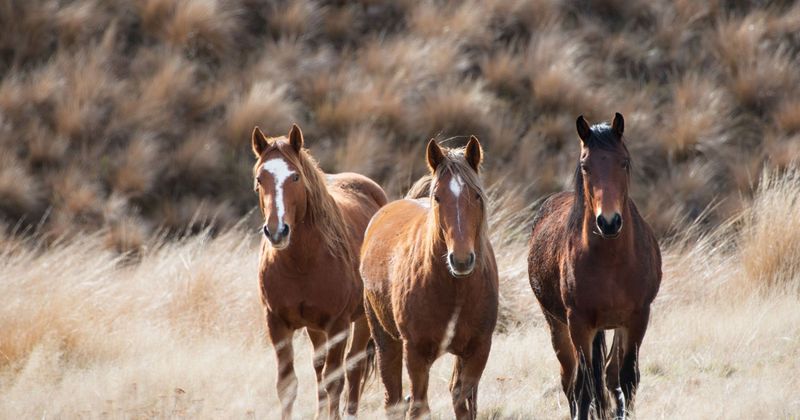
The Kaimanawa Horse, native to New Zealand, roams freely in the mountainous regions, embodying the wild essence of the land. These horses have adapted to the varied landscapes, from dense forests to open plains.
Kaimanawas are known for their diverse coat colors and strong, agile build. They hold a special place in New Zealand’s natural heritage, with management efforts ensuring their population remains balanced.
Their presence in the wild captures the imagination of horse lovers, symbolizing a connection to untamed wilderness and the rich biodiversity of the New Zealand landscape.
Fjord Horse
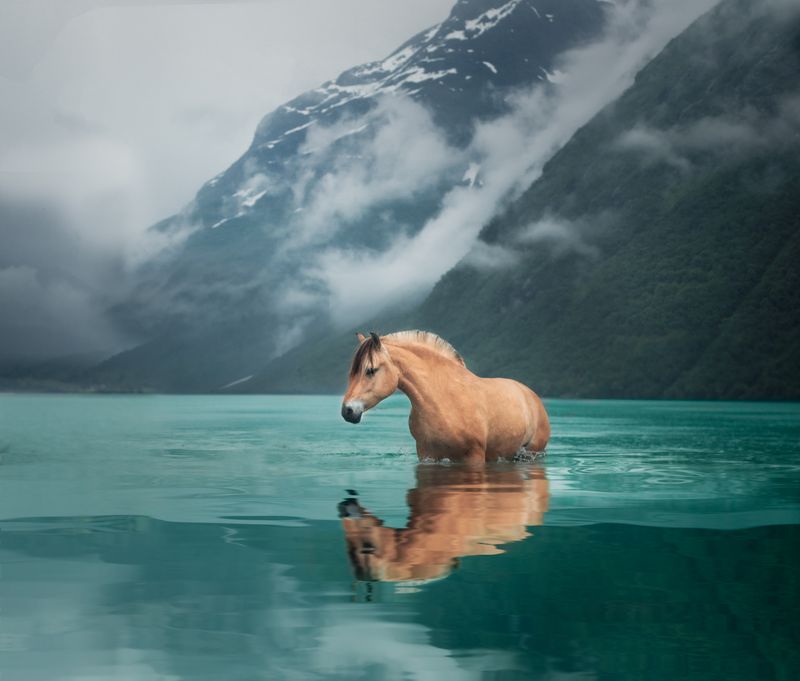
The Fjord Horse, native to Norway, is a breed known for its strength, agility, and distinctive appearance. Characterized by a dun coat and a unique mane that stands erect, these horses are both eye-catching and functional.
Fjords have been used for centuries in farming and transportation, valued for their hardworking nature and gentle disposition. Their adaptability to the harsh climates of Norway’s fjords showcases their resilience and vitality.
As a cherished part of Norwegian culture, the Fjord Horse represents a blend of beauty and utility, continuing to capture hearts with its unique charm and history.
Exmoor Pony
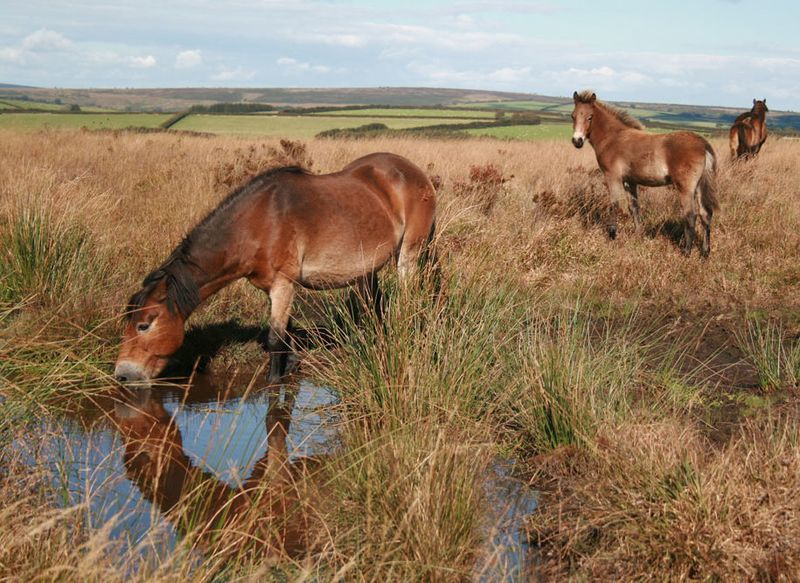
The Exmoor Pony, native to the moors of southwest England, is a breed steeped in antiquity and charm. These ponies are distinguished by their shaggy coats, expressive eyes, and sturdy frames.
Adapted to the challenging weather conditions of the moors, Exmoors are resilient and resourceful. They play a critical role in conservation grazing, maintaining the ecological balance of their habitats.
With a history intertwined with the landscapes they inhabit, Exmoor Ponies are cherished for their rugged beauty and contribution to preserving the natural heritage of the English countryside.
Chincoteague Pony
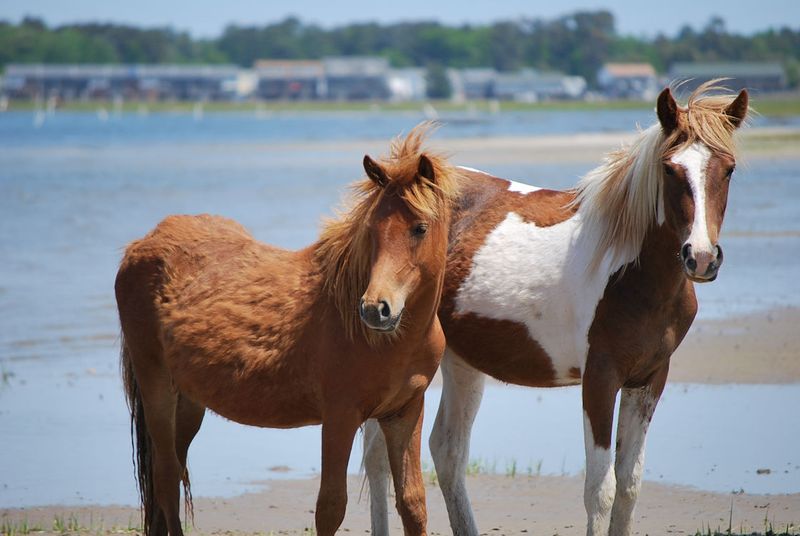
The Chincoteague Pony, famous for its association with Assateague Island, is a breed surrounded by mystery and folklore. These ponies are believed to have descended from Spanish shipwreck survivors, adapting to the island’s unique conditions.
Known for their hardy nature and diverse coloring, Chincoteague Ponies thrive in the salt marshes and sandy shores. They are celebrated annually during the ‘Pony Swim,’ an event that draws visitors worldwide.
With a storied past and enchanting presence, Chincoteague Ponies embody the spirit of adventure and the enduring allure of coastal life, captivating all who encounter them.
Cumberland Island Horse

The Cumberland Island Horse, inhabiting Georgia’s coastal shores, offers a glimpse into a world where wild and serene coexist. These horses are descendants of domestic breeds brought by settlers, now roaming free on the island.
Their presence contributes to the island’s mystique, with Spanish moss-draped trees providing a picturesque backdrop. Cumberland Horses, with their varied colors and gentle demeanor, are a natural wonder that draws nature enthusiasts.
As symbols of wild beauty and tranquility, they embody the coastal ecosystem’s delicate balance, enchanting those who venture into their untouched paradise.

